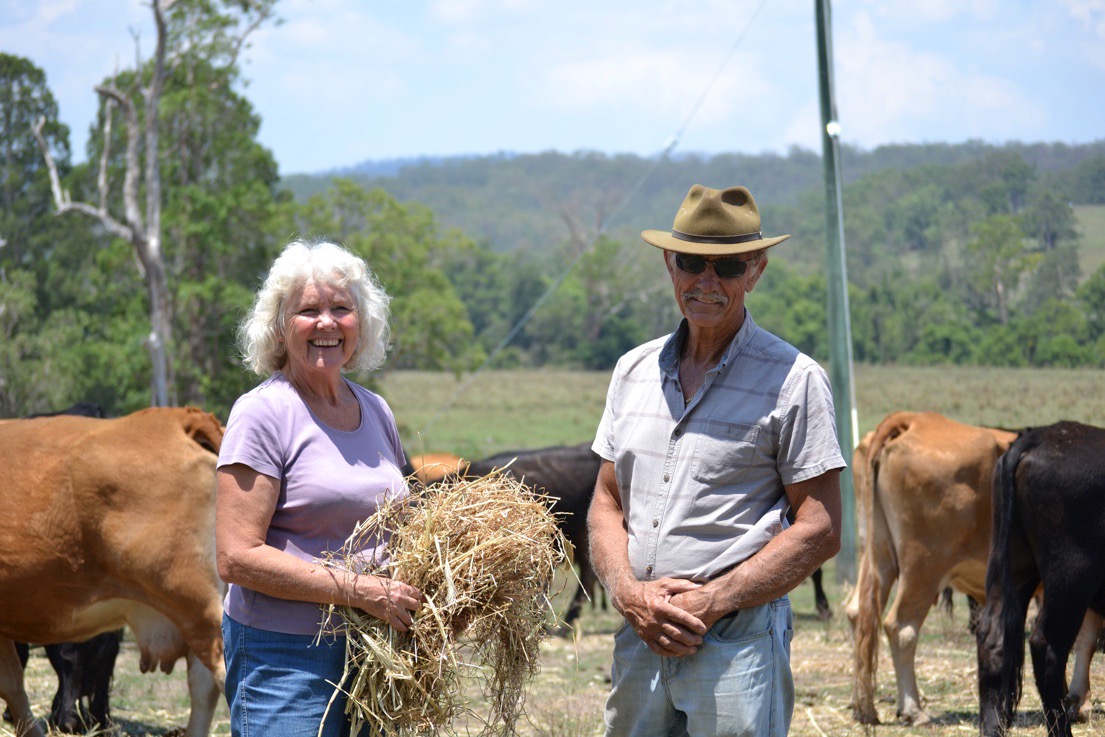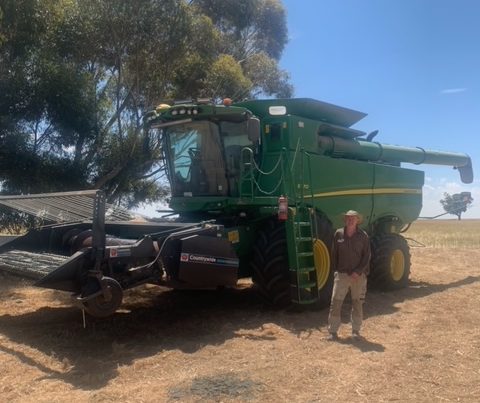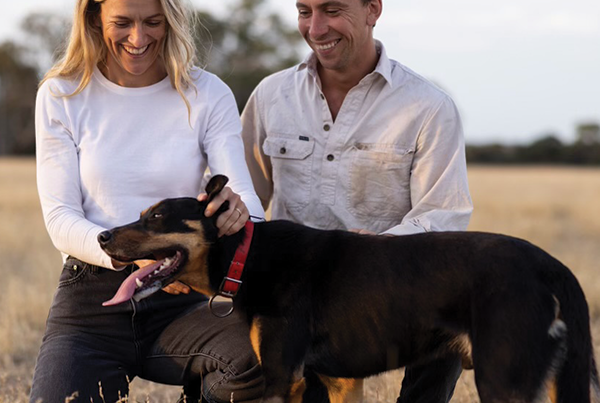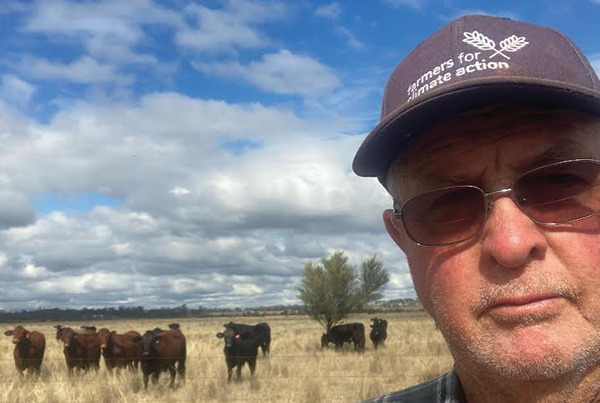
At a glance
Who: Meg and Peter Nielsen
What: 57 hectares, running cross Angus/Limousin cattle
Where: Bentley, Northern Rivers district of NSW
Can you tell us about your property?
Our farm is ‘Runnymede Ridge’ at Bentley in the Northern Rivers district of NSW, 20kms from Lismore. Located in the traditional lands of the Widjabul Wy-abul people of the Bundjalung Nation, it was part of the old Runnymede Station secured in 1842.
We have 57 hectares comprised of sandstone ridge running back to undulating hills of scrub soils with about 60% grazing land and 40% regrowth native woodland. This includes hoop pines, various eucalypts including bloodwood, ironbark, angophora, stringy bark, brush box and many pioneer rainforest species. We have 3 normally very reliable dams, and paddocks fenced to allow rotation of grazing pastures. (This system worked really well before the terrible drought)
Prior to 2003 we grew stone fruit, macadamias and coffee with a few head of cattle on 100 acres at Bangalow on the North Coast NSW. We then ‘downsized’ moving to Bentley and are now semi retired. We currently breed cross Angus/Limousin cattle on mainly native grass pastures with couch, pangola, Lotononis and other legumes. We also grow Rhodes Grass and bale to supplement the pastures.
How has climate change impacted on your farm business?
Rainfall has normally been recorded at between 40-60 inches pa (1000-1500mm). However in 2018 fall was down to 32” (800mm), with 2019 only giving us 25” (630mm) for the entire year. Consequently, we have had to reduce our breeding stock to 30 head.
Working on the land every day, so close to nature, we can’t help but notice the signs of climate disruption all around us. Our observations over 60 years of weather conditions showed the changes clearly, and the effects that those changes have had on our ability to grow fruit and vegetables are very worrying. The day we first saw the leaves on our fruit trees literally shrivel up in the extreme heat was terrifying. Whilst we have been following the reports from scientists, we hadn’t expected the effects to hit quite so quickly or with such fierce intensity. Despite the protestations of climate deniers and those with vested interests, it is clear that we are experiencing destabilisation of the climate which clearly correlates to escalating carbon emissions.
For us, trying to farm through this relentless drought has been very stressful and very expensive. Trying to keep sufficient feed and water up to our stock to keep them healthy is a daily exercise in hope and trust that the rains will come before the last dam runs dry. It’s ‘touch and go’. George, the previous owner born on this property in 1924, told us he’d never seen these dams fail. We’re extremely grateful that we are semi-retired! Imagine trying to make a living to support your family from the farm in these conditions.
What are some of the climate-smart strategies you’ve been employing and how successful have they been?
We are doing everything we can think of to make this farm more drought resilient and improve the health of the soils. Learning from the innovative, inspiring regenerative farmers, many who are members of FCA. We are adding more organic matter compost and mulch to cover soils to encourage carbon storage and microbes. Providing shade and shelter for fruit and vegetables. We have solar panels so energy costs are not a problem and we give back clean energy to the grid.
When we get decent rain we have plans to build the moisture retaining ability of our soils by sowing more species in our pastures and grazing less to retain more growth and cover of our soils. We have young trees waiting in pots ready to plant out to create more shade, wind breaks and moisture retention. When it rains…





